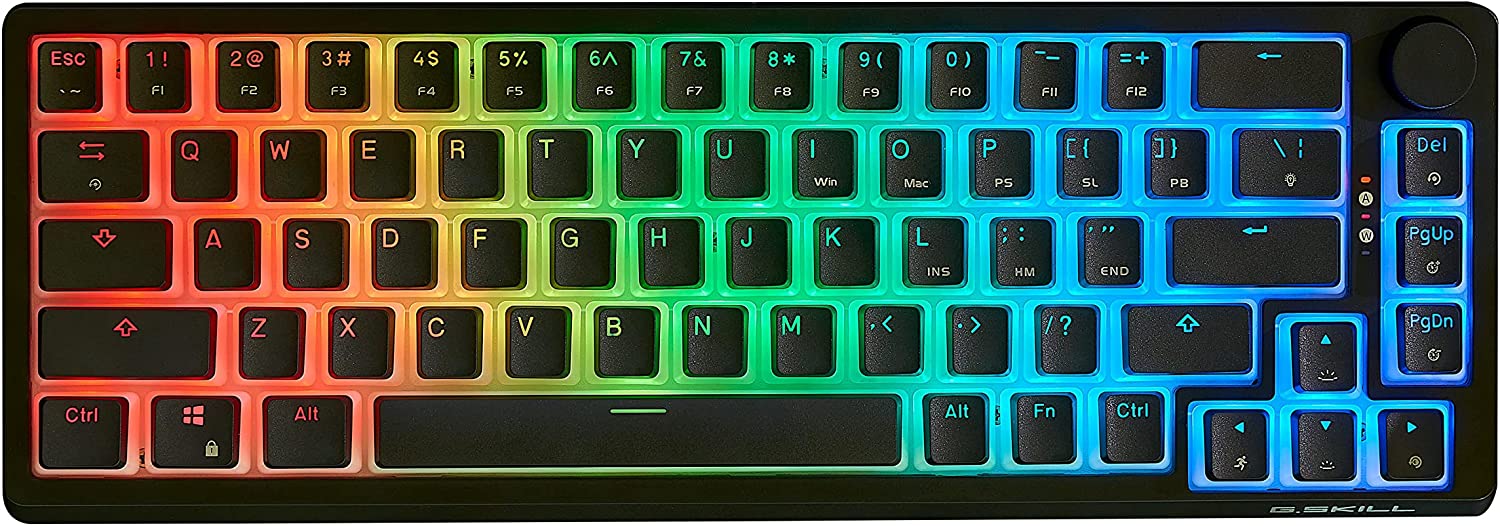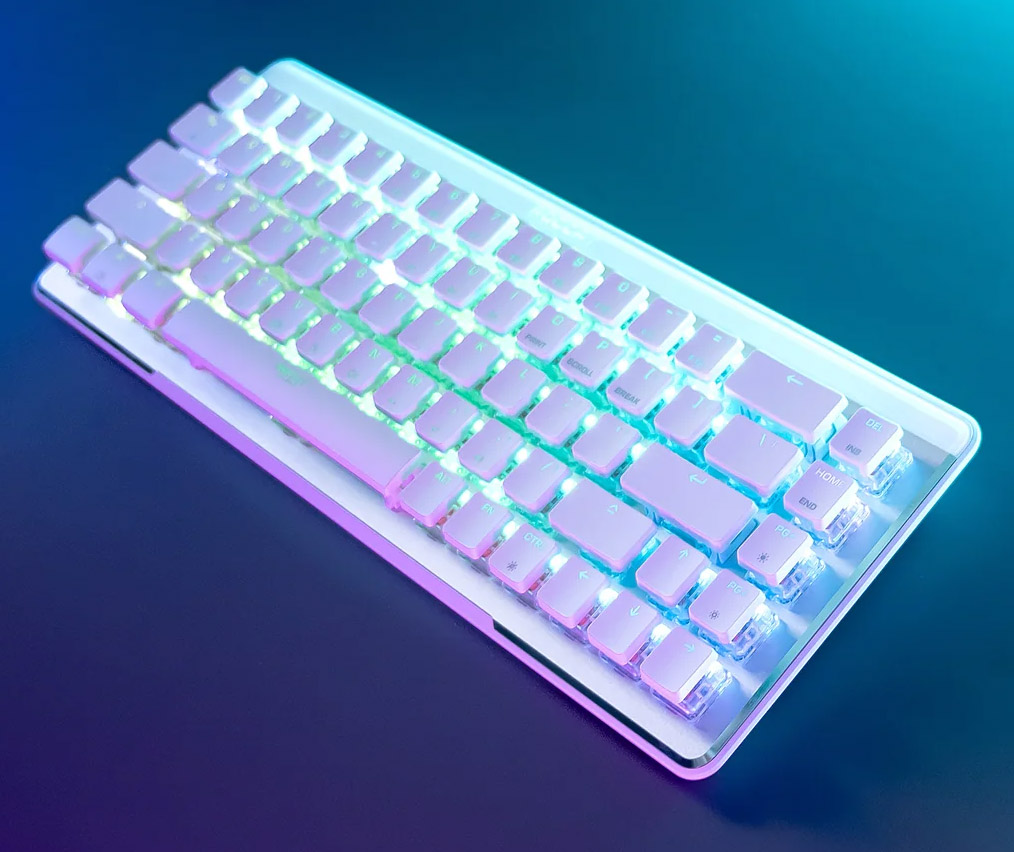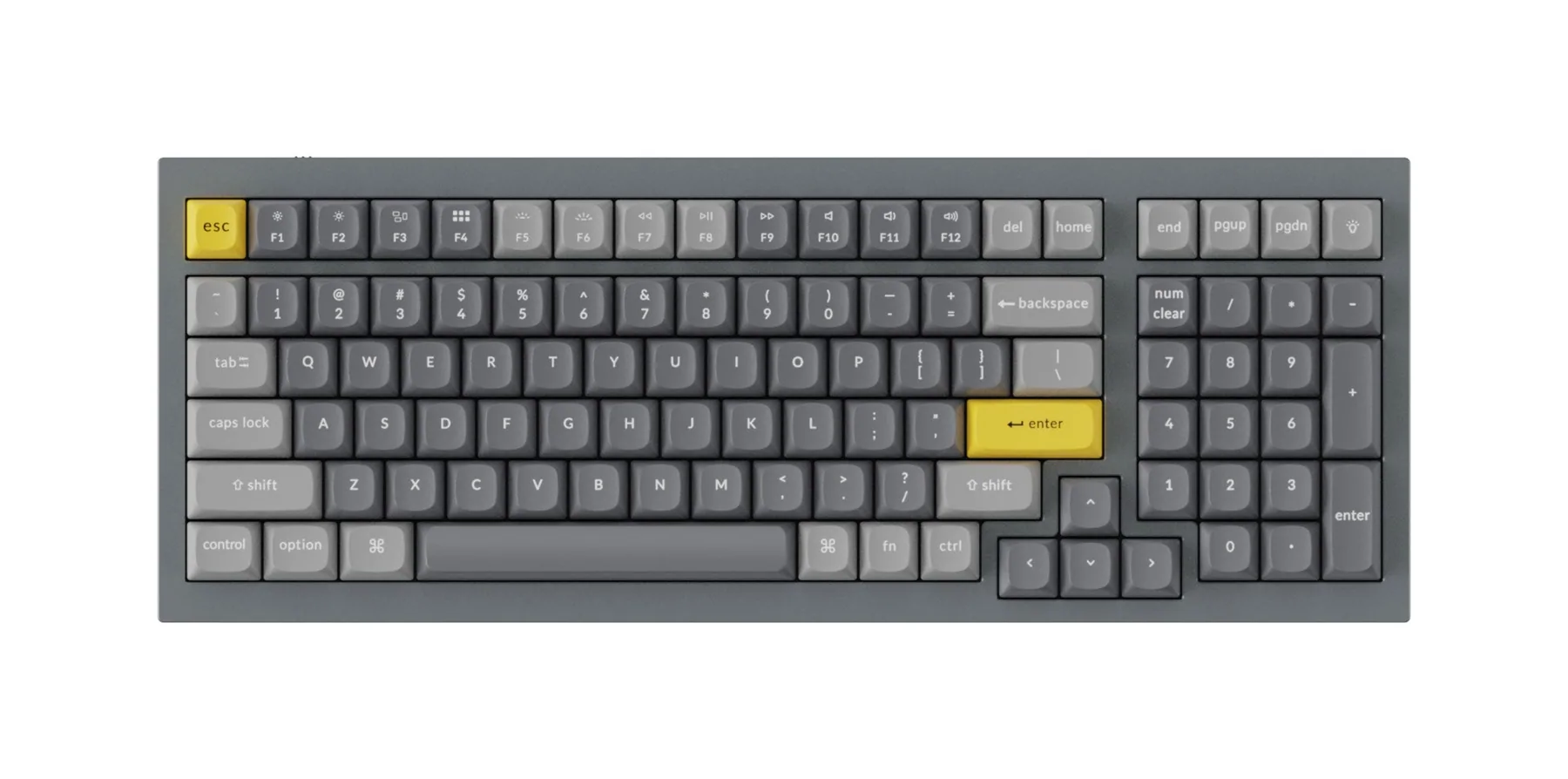Do you need a gaming keyboard to play PC games? Of course not. And spending triple-digits on one won’t automatically make you a winner, winner, chicken dinner. But getting a gaming-specific keyboard can make playing for long sessions more comfortable, and can also unlock a lot of customization options that add convenience to your favorite PC games. And we’d be lying if we said that the gamer aesthetic—complete with optional rainbow LEDs, of course—didn’t hold a certain appeal.
New gaming keyboards, with more and more flashy features, are being released almost constantly. Like the SteelSeries Apex Pro TKL, which failed to wow thanks to poor value and an unnecessary screen, or the Keychron Lemokey L3, which didn’t make this list because of a lack of gaming-focused software features. Below are the best on the market at the moment, and we’ll be keeping this roundup current as often as we can to make sure you can find the best boards in this wide and competitive field.
Updated 11/28/2023: Check out our latest reviews of the Corsair K70 Core keyboard and the 8BitDo Retro keyboard. The Corsair K70 has one of the best typing experiences at this price point with buttery smooth switches. The 8BitDo Retro keyboard on the other hand, will appeal to retro gaming enthusiasts who love clack-y, but high-quality keys.
Razer BlackWidow V4 75% – Best gaming keyboard overall

Pros
- Excellent switches
- Hot-swap sockets
- Comfy wrist rest
- “Thocky” typing feel
Cons
- ABS keycaps
- Synapse software only
- Warranty void if opened
Razer has a long history of gaming keyboards, but this is the first one it’s made to appeal to both gamers and mechanical keyboard nuts. With its hot-swap switches, gasket mount, and interior foam, combined with the all-new Orange V3 switches, it has a typing feel that beats just about any gaming keyboard out there, and the 75% form factor and cushy wrist rest are super-comfy. It doesn’t hurt that the price tag is below Razer’s usual top-of-the-line.
Those who prefer a full size can forego the fancy extras in favor of the BlackWidow V4 Pro, which is more expansive but less satisfying, and wireless fans can step back one generation with the V3 Pro. But gamers who want to dip a toe into the expansive (and often expensive) world of custom keyboards will find no better middle ground.
G.Skill KM250 RGB Keyboard – Best value

Pros
- Incredible value
- PBT "pudding" caps
- Great layout
- Hot-swap switch sockets
Cons
- No programming options
The G.Skill KM250 isn’t just the best budget gaming keyboard we’ve seen. With its long list of high-end features and a rock-bottom price, it’s the best value for a mechanical keyboard, period. With stylish PBT “pudding” keycaps, a rotary dial, hot-swap switches for deep customization, and even vibration-damping foam underneath the plate, it’s shocking how much G.Skill managed to cram into a keyboard in the $50 range. Even the default Kailh Red switches are great for gaming.
The board lacks wireless, and there’s no way to reprogram either its layout or its lighting. But these are minor quibbles for such a fantastic budget design, especially when most gamers will customize their layouts within the settings of individual games. Use the savings to buy some fancy switches or keycaps and customize the KM250 to your heart’s content.
Roccat Vulcan II Mini Air Keyboard – Best for travel

Pros
- Incredible battery life
- Dazzling RGB lighting
- Light weight
Cons
- Expensive
- Slippery keycaps
- No wrist rest
Roccat’s Vulcan series is all about giving users a dazzling RGB light show. But combining that feature with a wireless board gave it a surprising bonus: absolutely incredible battery life. With a lightweight build and shocking longevity, plus some interesting extras like presence detection, the Vulcan II Mini Air makes a fantastic travel companion. This thing will last for days and days with the lights on at full brightness, or months with them turned off.
The “floating” keycaps aren’t for everyone (though they’re easy to replace), and it has a high price tag, but gamers looking for on-the-go keyboard excellence won’t find anything better. And it doesn’t hurt that this little keyboard is just so darned pretty.
Razer DeathStalker V2 Pro keyboard – Best low-profile gaming keyboard

Pros
- Thin profile with comfy keys
- Nice volume wheel
- Many connection options
Cons
- Expensive
- No wrist rest
- Default mute button is tricky
There are thinner gaming keyboards out there, but if you get much thinner than the low-profile switches and keycaps in the new DeathStalker, you start to lose a lot of comfort. (And add a lot of cost.) The V2 Pro is ideal if you’re looking for something a little thinner and more modern, but which preserves all of Razer’s gaming bells and whistles at the same time.
The “floating” keycaps on the DeathStalker manage to feel more like a full-sized keyboard than a laptop board, even with much shorter key travel, so this board should slide right into your desktop gaming setup with no trouble. The DeathStalker V2 also comes in a shorter TKL variety, and a wired version if you want to save some money.
Keychron Q5 keyboard – Best alternate gaming keyboard

Pros
- Super-heavy body
- Great keycaps
- Excellent customization
- Surprisingly competitive price
Cons
- Unnecessary Mac/Windows switch
- Programming layer limits
- No adjustable feet
Technically, Keychron’s high-quality, super-customizable Q keyboards aren’t meant for gaming. But with a selection of switches (including speedy Linears) and a 1000Hz polling rate via the USB-C wired connection, it can keep up with pretty much any board on this list in terms of gaming prowess. And that’s before you customize it with QMK or VIA programming, the go-to choices for mechanical keyboard fans.
On top of that, the Q series comes in a wide variety of layout choices, with high-quality aluminum bodies, hot-swappable switches, PBT keycaps, double-gasket mounting for that “thocky” feeling, and even case foam for reduced noise and vibration. They’re also mod-friendly and easy to open if you want to really dig into customization. For a keyboard that can handle gaming, writing, and anything else you can throw at it, any member of the Q series is a great choice. The new Q Pro variants add wireless options, too.
The Lemokey L3 is a TKL board from Keychron that offers many of the same features, plus “gaming” wireless (USB instead of Bluetooth), but unfortunately lacks game-specific programming options.
FAQ
What’s the difference between a gaming keyboard and a regular keyboard?
Of course you can play PC games on any keyboard, assuming they were designed for it and not a controller. What separates a regular keyboard from a “gaming” keyboard is its intent—gaming keyboards are designed for speed and comfort across long play sessions. While “comfort” is subjective, and somewhat limited in making a gadget that conforms to standard typing, speed is readily quantifiable.
There are a couple of specific ways of measuring speed. One is the latency, the time it takes for a key press to translate into an action on your screen. Normally this is the relevant character appearing in a text window, but for a game it’s a sword swing, a foot movement, a grenade toss, a special ability activated. Gaming keyboards have special hardware that can minimize this latency: gold-plated connections on a USB port, for example.
The easiest way to reduce latency is to increase the amount of times the keyboard’s circuit board checks for key presses. This is called the polling rate, expressed in hertz. A standard keyboard has a polling rate of 100 to 200Hz, checking every tenth of a second or so. A gaming keyboard might have a polling rate of 1,000Hz or more—typically so fast that even the fastest human reflexes won’t be able to spot any gap in between a key being pressed and its relevant action on screen.
Are mechanical keyboards good for gaming?
Yes—if it’s the right mechanical keyboard. While any mechanical keyboard can be used for PC gaming, just like any standard keyboard, most gamers prefer a specific kind of switch. Linear switches, with a smooth action from zero pressure to the point where the switch “bottoms out” and can’t be pressed down further, allow for each key to be depressed faster and return to its resting position faster, too. Tactile or Clicky switches, while excellent for typing, are a bit slower and not preferred for gaming.
Cherry MX Red switches are the go-to choice for mechanical keyboards designed for gaming. There are tons of varieties, in a ton of colors that might not correspond to the actual properties of the switch itself. Some have a higher actuation point (the point in the key travel at which the keyboard registers a press), or lighter springs for a softer touch, or even less key travel to shorten the distance between pressing the key and bottoming out by a few millimeters. Some fancy “silent” switches are much quieter than normal ones.
But the important part for most gamers is that Linear switch type for smooth, fast presses. Unless your tastes are very unconventional, you want Linear switches for gaming, not Tactile or Clicky.
Are wireless keyboards good for gaming?
Yes! Even before modern wireless gaming keyboards arrived on the scene about 10 years ago, most keyboards using standard dongles and RF connections were fast enough to beat gamer reflexes. More specialized models make this wireless connection even faster, as quick as one-thousandth of a second—again, far faster than any human being can tell, and essentially identical to the speed of any wired connection.
There is an exception. Many wireless keyboards use Bluetooth, and that’s not ideal for gaming. Bluetooth is just slow enough that a gap between the key press and the action on screen is noticeable, even if you don’t have super-human reflexes. And it’s also on a very crowded wireless spectrum, so Bluetooth accessories are more prone to interference.
Even if your wireless gaming keyboard offers Bluetooth as a multi-device pairing option, you should go with the RF USB connection whenever you have the option.
Do gaming keyboards need RGB lights?
No. But they’re fun, aren’t they?
RGB lights can be programmed to indicate specific key bindings, and some driver programs even include custom decorative patterns for specific games. But since you’ll be looking at your monitor and not your keyboard most of the time, the lights are basically just for show, no matter what they happen to be doing. And if you’re not a fan, you can always turn them off (which can save a huge amount of battery life on wireless keyboards).


